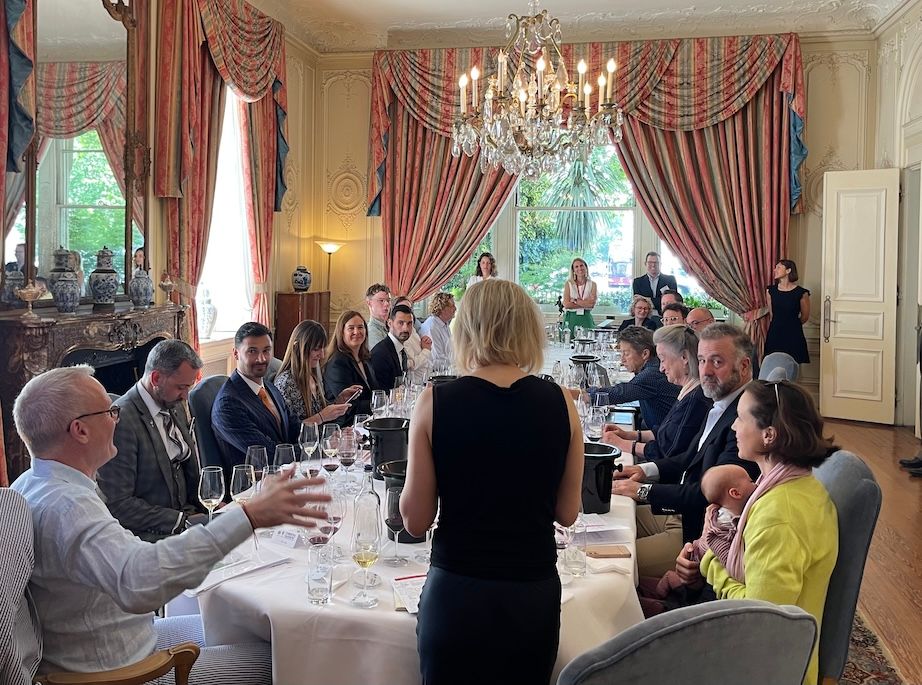Corney & Barrow is perhaps best known for its expertise in Burgundy and so it is quite an extraordinary thing to see an established merchant of centuries standing get behind contemporary, terroir-driven South American wine in this way.
Rebecca Palmer, Corney & Barrow’s head of merchant buying, reveals that it was partly the company’s experience with terroir-driven wines in Burgundy that made these Argentine offerings such a natural fit.
“It had become evident to us for some time at Corney & Barrow that there was more to Argentina than we, as UK wine merchants with a certain reputation, were doing justice to. We are well known for our work with Burgundy, for offering wine that is terroir-driven and for working with a diverse range of producers, each unique, but all with that sense of place the region is so famous for.”
“Argentina has incredible terroir too, much long-established, some emerging, each with its specific altitude, climatic conditions and varietals. In the hands of growers and winemakers who ‘get’ the importance of a sense of place, with certain vineyards yielding thrilling wines. We should talk about them in the same way and language we would use for established fine wine regions like Burgundy.”
“Today top restaurants must list Puligny and Meursault, Vosne and Volnay, in time we should expect to see Chacayes and Cachi, Paraje Altamira and Perdriel, Pucelles side by side with Las Pareditas. It will take time but wine does take time. The key in all this – is to see it, capture it, commit to it, in the ascendant.”
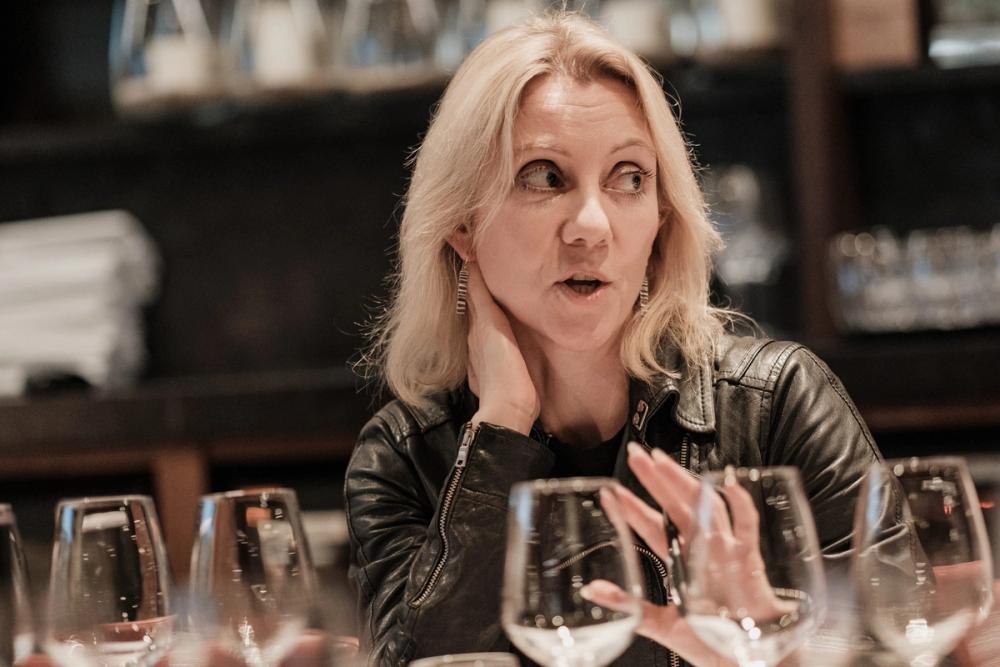
Rebecca Palmer: a dedication to terroir and an obsessive drive for quality
Palmer explains how she approached the portfolio restructuring, and how she and the sales team were both enlightened by and fell in love with Argentina’s offerings.
“It’s rare to restructure a portfolio area all at once, and difficult to pull off, and you can’t shortcut the process, it’s intense and very difficult to accomplish. It meant engaging closely with our sales teams at every point and for weeks the office was full of samples, it was a bit mad. Ultimately though it was very clear who our new producers should be, there was a philosophical alignment, a synchronicity that manifests in a dedication to terroir and an obsessive drive for quality.”
“We hope so much that people find pleasure in these wines, that they are thrilled the way we have been. And that, as a result, they have the confidence and aspiration to explore Argentina further. Because that for us is the point.”
“We had to bring these wines to market, it did not feel like a choice but a responsibility. As an historical wine merchant, around for almost 250 years, we were partly responsible for establishing the reputation of classic styles. We must help find the classics of the future too.”
Classifying Argentina’s terroir
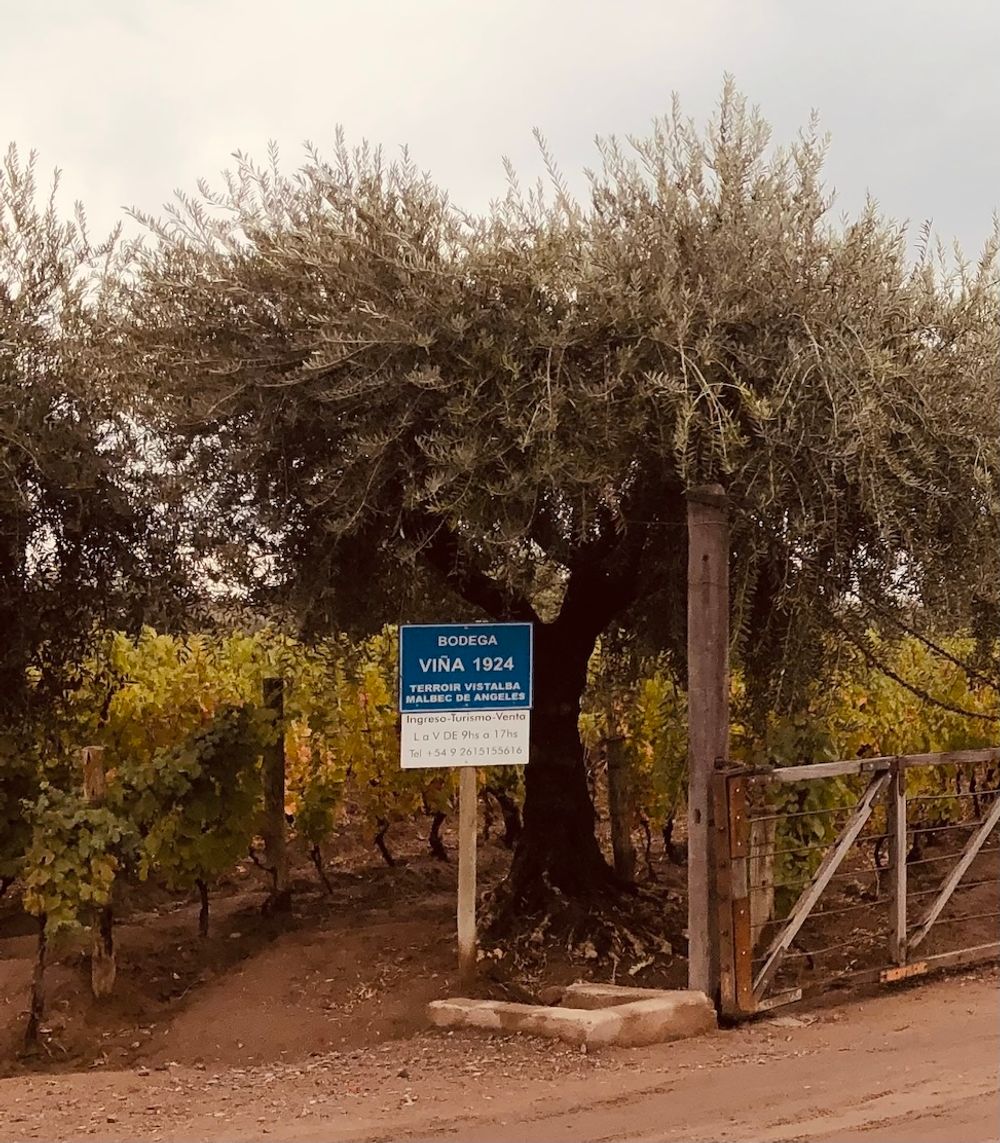
De Angeles vineyards delineated by terroir since the 1890s
Of 23 Argentine provinces, 20 grow grapes with Mendoza and San Juan growing 92% of all grapes produced. There are 117 different grape varieties in the country and only 23% of these are the headline varieties of Malbec, Cabernet Sauvignon, Chardonnay, Syrah, Tempranillo and Bonarda (the second most planted variety).
Most of the vineyards are in the west of Argentina, flanking the Andes. Thanks to climate change, people are picking as much as a month earlier, planting higher, further south in Patagonia and further east on the Atlantic Coast. They are now consistently ripening Cabernet Sauvignon. On the Winkler scale vineyards go from one to five, that’s the climatic equivalent of Champagne to North Africa… terroir in Argentina is seriously broad. Soil, elevation and temperature may vary wildly in just a few kilometres thanks to altitude.
Argentina has thankfully woken up to the potential of signposting its fabulous terroir.
Vineyards such as De Angeles in Vistalba were delineated by soil type as early as the 1890s but terroir took a back step when market demand dictated mass planting in the 1980s. Today, fine wine in Argentina is increasingly benchmarked by a sense of place, producers are actively fighting bureaucracy to delineate smaller regions and single vineyard wines. Currently Paraje Altamira is the only region delineated by soil type and there has been a huge amount of wrangling over who is in and who is out.
The classification of Argentina’s terroir is way past time.
Greater freshness and more whites
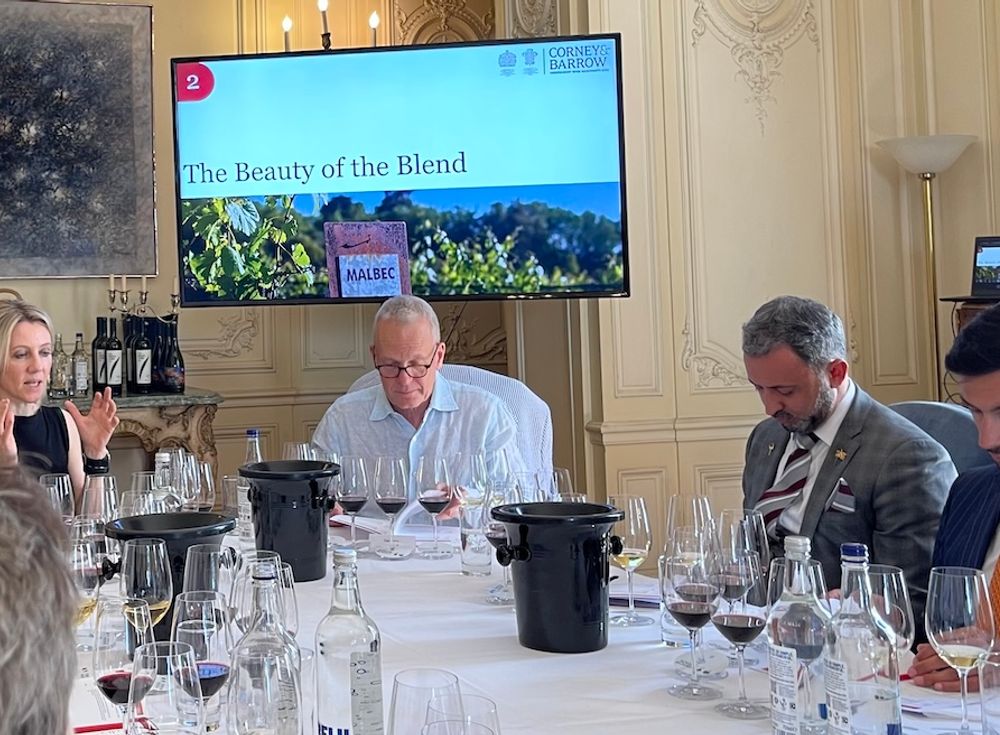
Tim Atkin MW and Rebecca Palmer presenting the new range, July 2024
Tim Atkin MW describes Argentina as ‘Old New World’, as beautiful and chaotic as South Africa, recognisably European but far more exotic. Before the tasting of the eight new Corney & Barrow wines he delivered a masterclass which put contemporary Argentine winemaking into context, painting a picture of where it was before the ‘internationalisation’ of the 1990s.
Wine is Argentina’s national drink and in the 1970s average annual consumption was 70 litres a head, most of it white. Today it’s more like 20. Until the 1970s, Argentina grew more white grapes than red. These were predominantly pink Criolla, a cross between Listán Prieto, aka Mission and Muscatel de Alexandria.
Then in the 1990s international consultants most famously Lurton, Rolland and Hobbs brought cleaner winemaking practices to the country and moved production in a lucrative red direction; new French barrels didn’t arrive in the country until as late as February 1990 and before then classic styles were unoaked and far lower in alcohol.
But now, according to Atkin, winemaking styles are moving back again as freshness is increasingly valued by growers and drinkers. He says that the shift back from so-called ‘international styles’ towards earlier picking, less oak, elegance, acidity, freshness and perfume, is driven by young well-travelled Argentine winemakers too.
“Twenty years ago, I would taste Malbecs all day, and when I wanted something white and refreshing, it just wasn’t there. That transformation has come particularly with the arrival of drip irrigation in 1994 from Israel which made it both possible to grow on slopes and at altitude,” Atkin says.
The dominant white varieties today are Torrontés, Chardonnay, and Sauvignon Blanc, with Chardonnay scoring the highest average marks in the white category in Atkin’s latest report.
White blends are also becoming increasingly important with Chenin Blanc and Sémillon still found dotted about in old mixed vineyards, often ungrafted. Atkin revealed that in the 1970s Semillon was actually more expensive than Malbec.
Wines shown in the masterclass
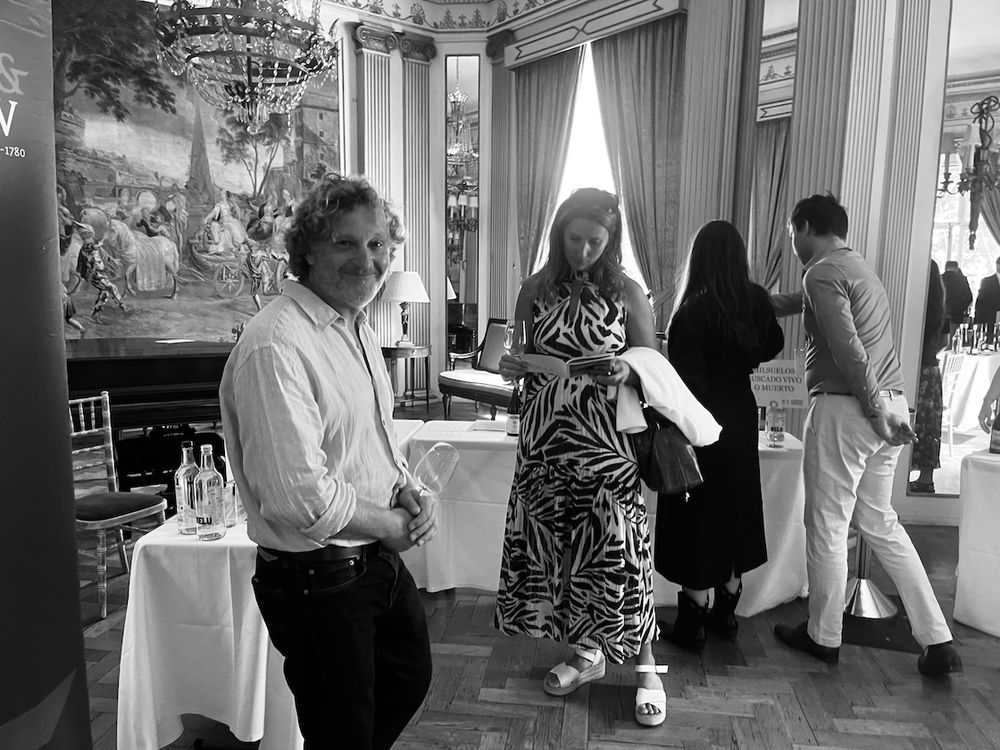
“With heavy oak, where is the place? Well, it’s in a forest in France!" - Alejandro Sejanovich
Milsuelos El Cerro Chardonnay, Buscado Vivo o Muerto, Gualtallary, Uco Valley 2020 13% £24.95
Buscado Vivo o Muerto is one of three brands created by three ‘out-there’ highly talented, slightly oddball wine obsessives by the names of Jeff Mausbach, Alejandro Sejanovich and Jorge Crotta. Cielo Arriba and Estancia Los Cordones are the other two brands, collectively called Milsuelos. They make wines that are deliberately unconventional, from marginal or forgotten terroirs. They scored very highly in Atkin’s latest report.
Sejanovich began his career as vineyard director in charge of research for Catena, he is highly respected and extremely modest. He’s an advocate of mixed old vineyards adding complexity in the wine, pruning and irrigation.
“Irrigation is part of Argentina’s terroir because you can’t grow vines without it.” He keeps the fruit turgid with irrigation avoiding water stress completely because he believes the flavour should come from photosynthesis.
He doesn’t thin his fruit but utilises pruning to control volume and doesn’t believe in dominating wine with oak as it loses its sense of place. About French oak use, he jokes “With heavy oak, where is the place? Well, it’s in a forest in France.”
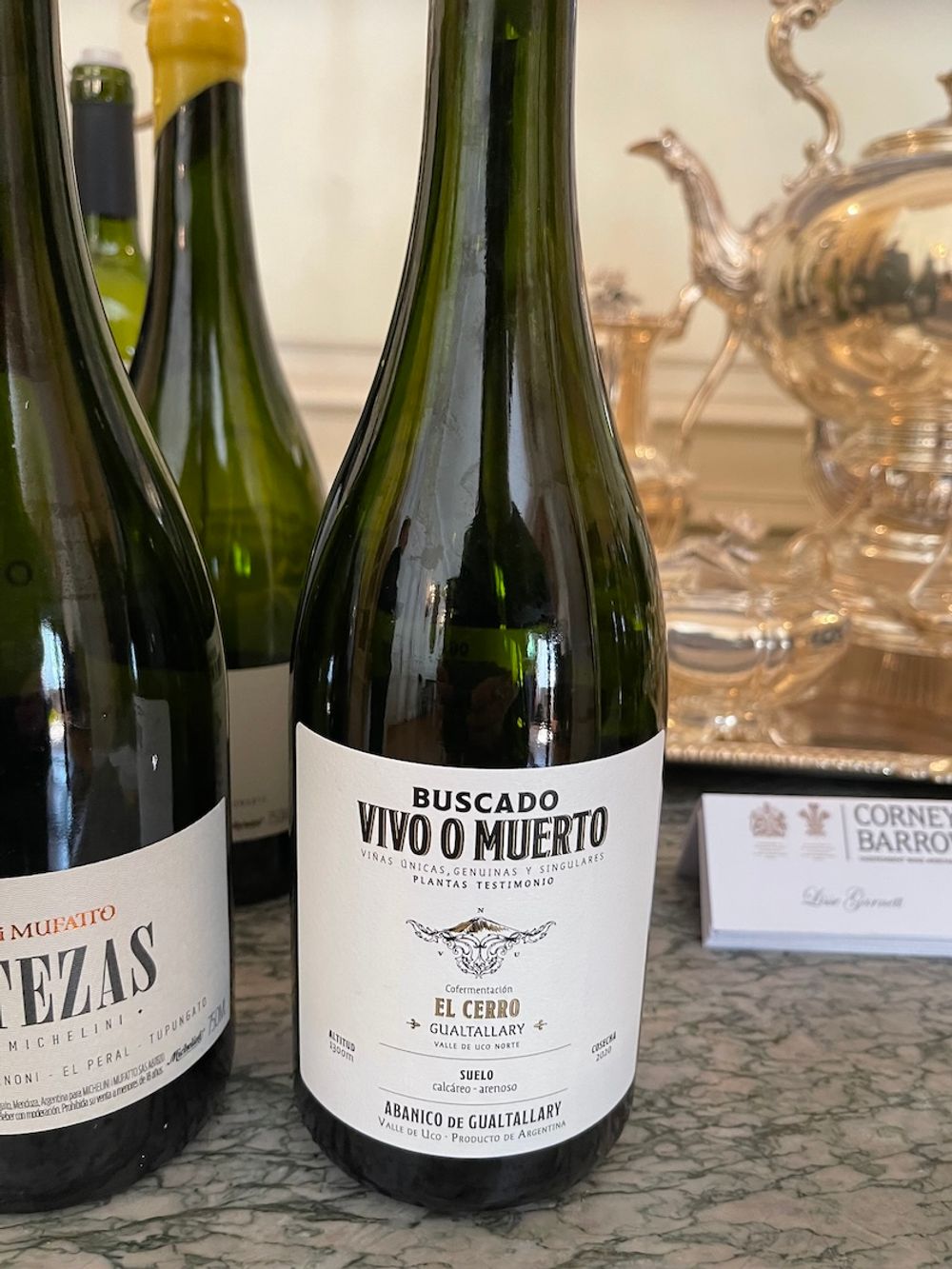
El Cerro Chardonnay is from Gualtallary, which runs from one to three on the Winkler scale and rises to 1700 metres (The vineyard is Winkler 3). 2020 was a Covid vintage. It was hot dry and mercifully early. Pressing was oxidative pneumatic, the juice was chilled, then fermented in 500 litre old 8-use barrels with lees stirring. The wine then stayed in barrel for a year before spending 8 months in tank on lees before bottling.
Tense, textural and fresh yet smooth, ripe and concentrated. Sandy limestone soils bring a sense of salty minerality. Lemon verbena, apple, saline, lime and thyme. Zippy with zesty lemon sherbet. Deliciously tempered by subtle notes of savoury bitter endive and delicately toasted hazelnuts. Gorgeously long on the finish.
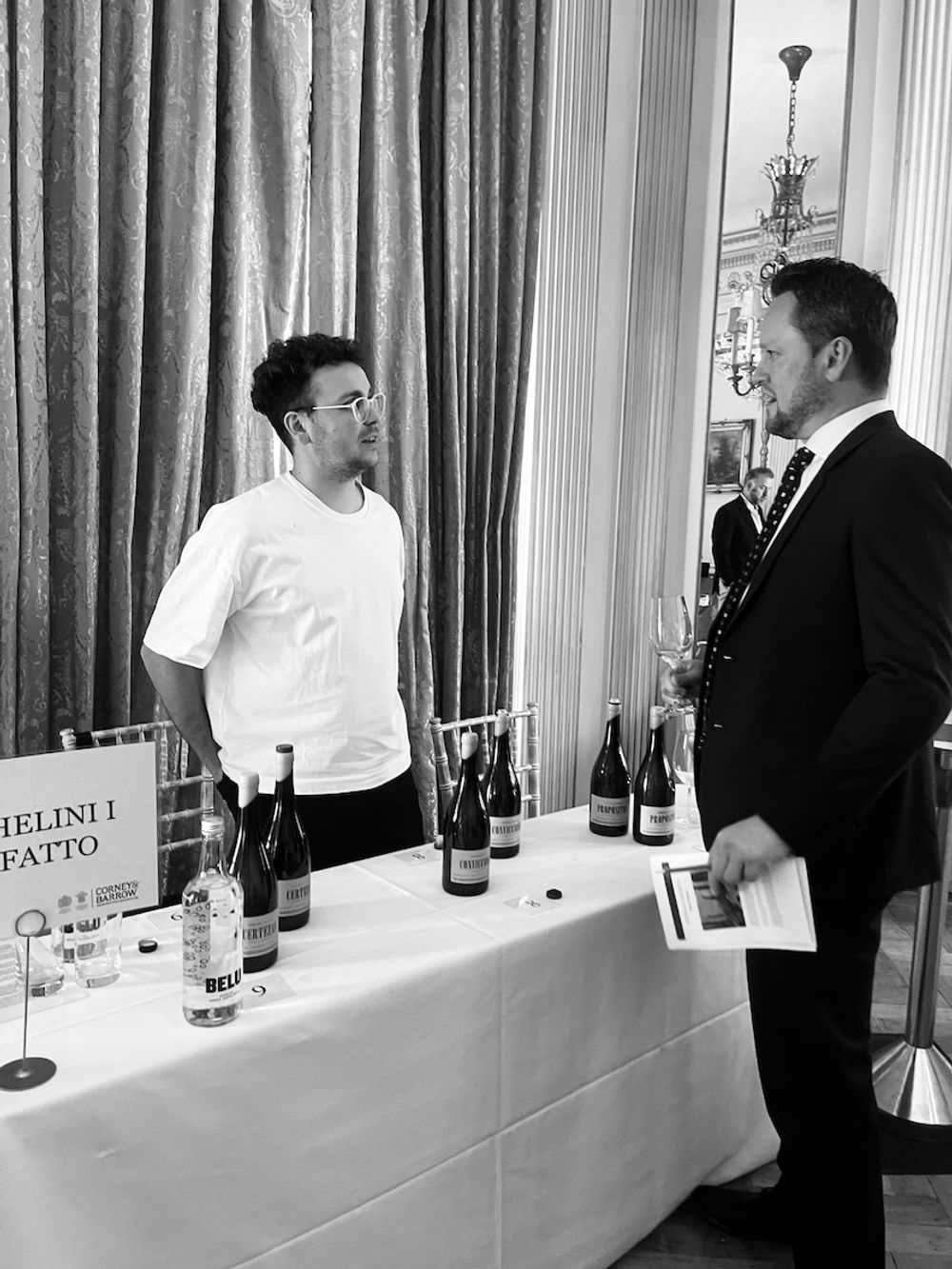
Manu Michelini
Certezas Semillon, Michelini i Mufatto, Gualtallary, Uco Valley 2021 13% £65.95
The evolution of the Michelini family has been stratospheric – “they pop up like mushrooms” says Atkin. Manu (Manuel) Michelini is now producing some truly exceptional bottles produced in partnership with his father Gerardo Michelini and mother, Andrea under the label, Michelini i Mufatto.
Certezas Semillon is sourced from 133-year-old vines in El Peral and aged under flor in 100-litre foudre. Wonderfully textured, divinely perfumed, golden in colour, it’s salty and perfumed and has tannic grip from skin contact, it’s creamy and luscious with notes of savoury herbs, lime, and thyme; it’s waxy and unctuous yet fresh, grippy and beautiful. Honeyed yellow apple, vanilla, pear, a touch of salty pineapple - a note of high church incense, the perfume it exudes reminds me of the George V in posh Paris.
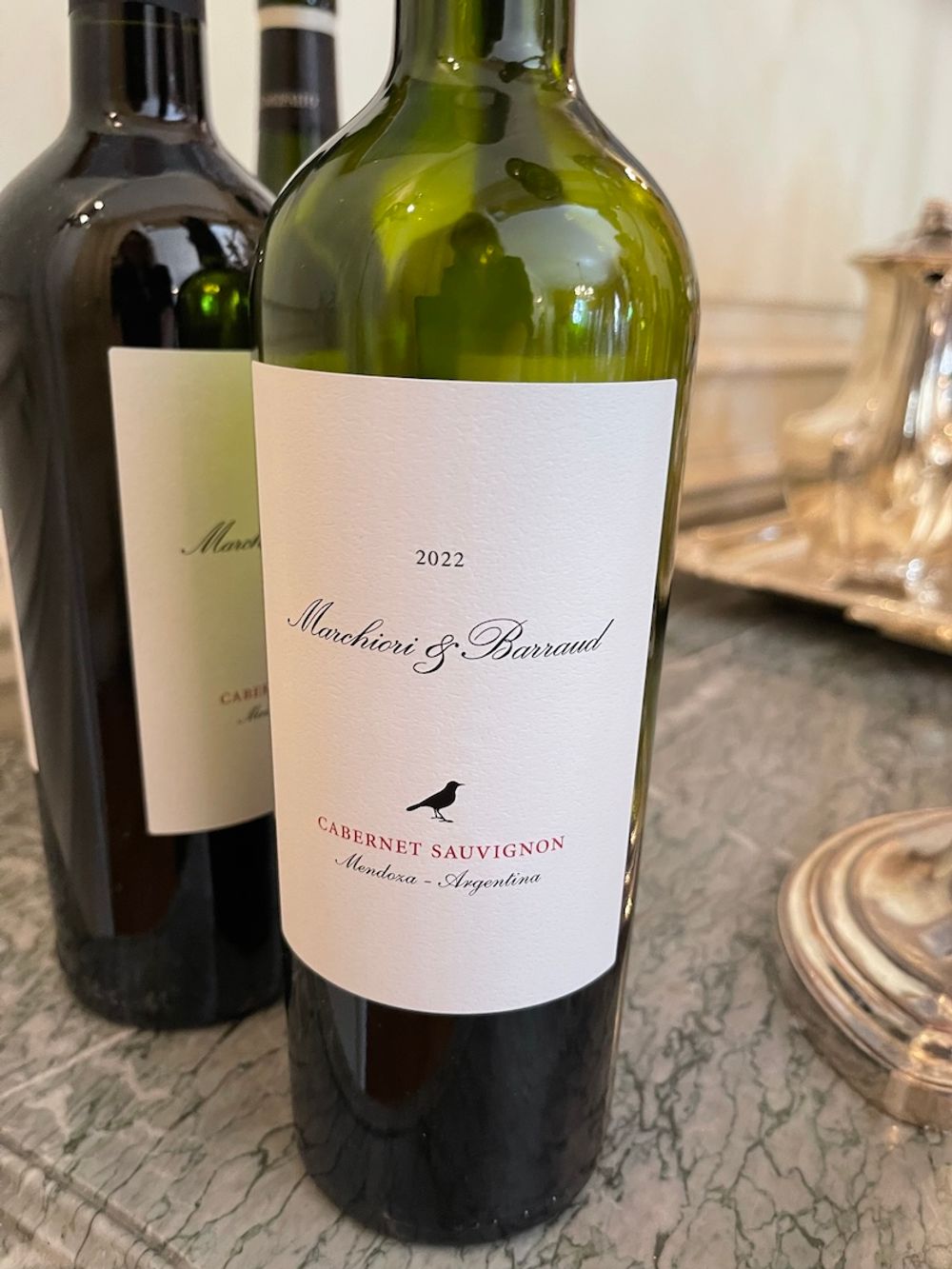
Cabernet Sauvignon Marchiori and Barraud, Uco Valley 2022 14.5% £15.25
This single variety Cabernet enthralled Corney & Barrow enough to headline its Bordeaux blend red section with it. The French influence is palpable in these wines. Atkin highlighted Argentina’s Bordeaux connection, explaining that the Argentines drank more Bordeaux than the Brits in boom times. He added that famed international winemaking consultant Francois Lurton believes Argentine Cabernet has greater potential than Malbec. There were many old Cabernet vines in Argentina until the 80s when they were deemed uneconomical.
Andrea Marchiori, who flew to London from Argentina to tell us about her wine, explained that her father was reluctant to plant Cabernet because of the economics and, with planting in 1999, Andrea got her way but the variety has proved extremely challenging and it took many years of errors before Andrea felt she understood what was needed. Irrigation and pruning must be precise as the variety “will not forgive many mistakes.” Ripeness is fundamental if harsh tannins are to be avoided.
This wine was produced from the cooler 2022 vintage, the grapes were ripe and produced velvety tannins. Yields were good, the grapes were picked early and cold macerated before fermentation. The wine is fruit-forward and focused with only 10-12 days of maceration. Oak is judicially applied to enhance fruit with staves. Fruity, fresh, redolent with plum, blackcurrant, blackberries and black cherry and gorgeous grainy tannins – the mouth is mineralic and minty with hints of black pepper and garrigue.
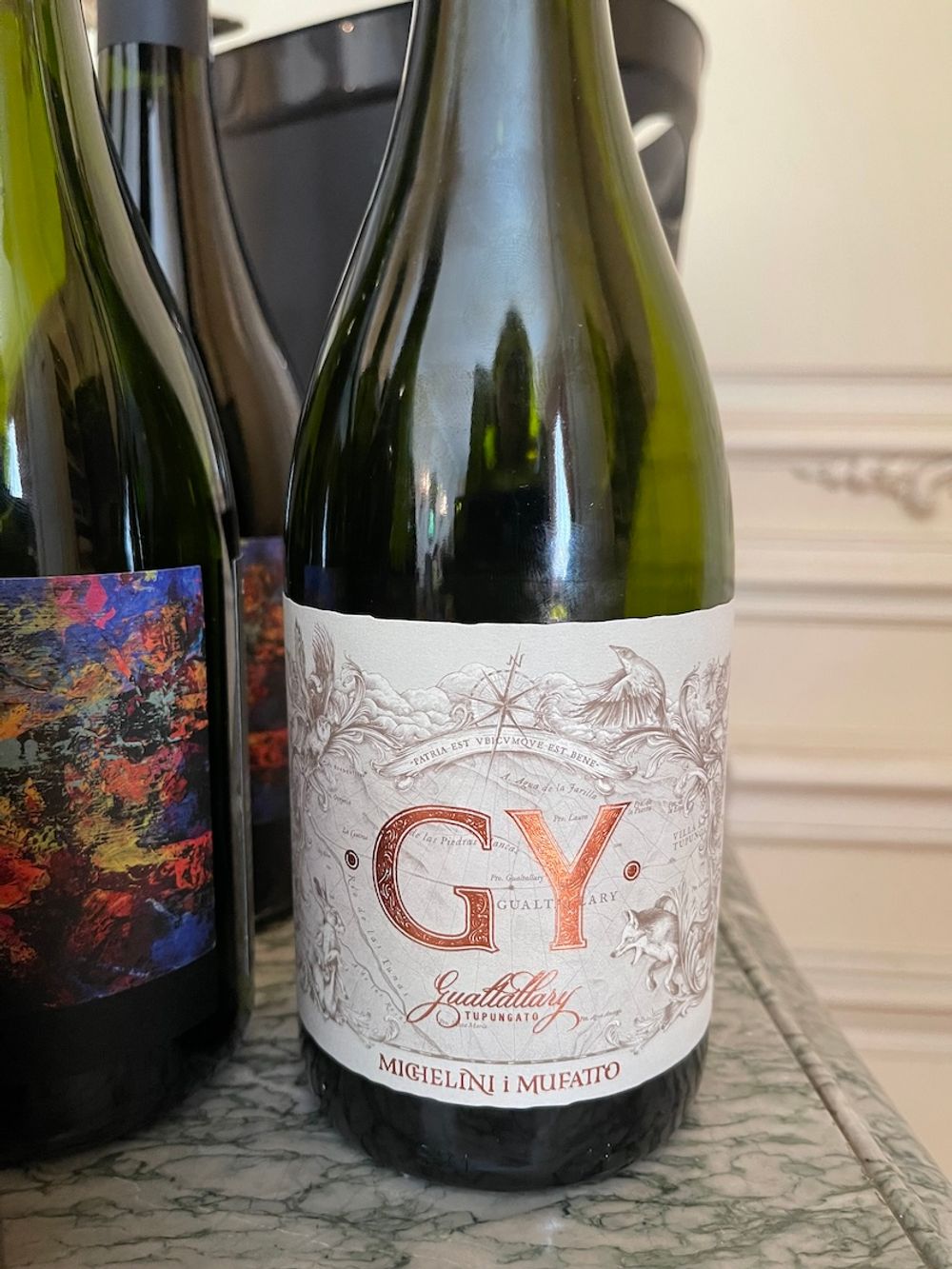
GY Malbec Cabernet Franc, Michelini i Mufatto, Gualtallary, Uco Valley 2021 13.5%
Malbec and Cabernet Franc is an acutely fashionable blend in Argentina. Cabernet Franc has been present since the 19th century courtesy of the French viticulturalist Michel Aimé Pouget who arrived in Chile and then migrated to Argentina in the mid 1850s. This blend is named GY after Gualtallary which is trade-marked.
Mani Michelini says Cabernet Franc requires cool temperatures and poor soils to express terroir and avoid greenness so high-altitude grapes were sourced from 1200-1600 m above sea level, from a mix of terroirs, predominantly limestone and chalk.
The Malbec was whole bunch fermented, as “stems are part of terroir,” to increase PH and give an impression of freshness. There is a freshness – a chalky minerality, gorgeous buttock chaffing tannins, it’s young, fresh, puckered and plummy. Supple and precise – fairly closed on the nose. This is a cool climate, lower alcohol style indicative of Gualtallary.
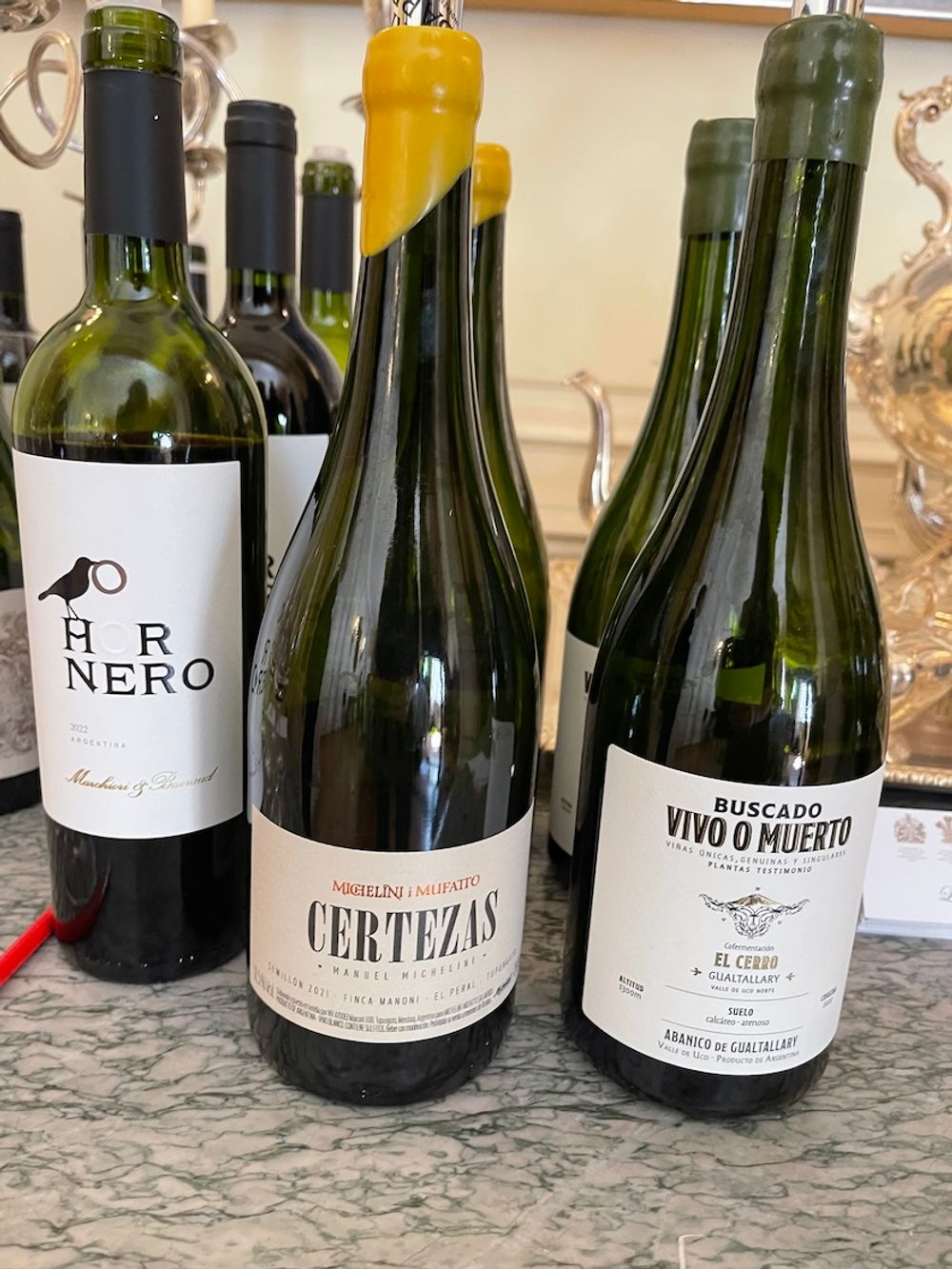
Hornero Marchiori and Barraud, Lujan de Cuyo, Uco Valley 2022 14.5% £32.30
This is a blend of 65% Malbec, 20% Cabernet Sauvignon, Cabernet Franc and Petit Verdot (a vintage and variety-variable). Fruit comes from stony alluvial fans high in limestone and calcium carbonate, close to the Mendoza River in Perdriel, Lujan de Cuyo. Aged for 16 months in oak barrels (30% new French oak). Wine is blended before bottling. The only rule is more Malbec than any other variety – this is the first time they have introduced the most tannic grape – Petit Verdot – which gives a lot of energy, the Cabernet Franc brings depth. Deep, dark and tangy with plum, prune, liquorice, stewed blackberries and dry, golden, tobacco-scented tannins. Concentrated and deliciously intense.

Finca Medialuna Malbec, Maipu 2020 14.8% £47.65
Atkin introduced this wine with an ode to Malbec, he sees it as Argentina’s most distinctive and important grape but also pointed out that it is reflective of terroir and therefore hugely versatile. It’s capable of ageing and easy drinking much like Tempranillo in Spain.
We tried two vintages of this wine, 2020 and 2022, both cool. The wine comes from Medrano in Maipu, from ungrafted vines in the Uco Valley. Evaporation is used to temper the alcohol. Both were aged for twelve months in 40% new oak 225-litre barriques, 29% in 500-litre 2nd or 3rd use tonneaux. The wine is unfined and unfiltered.
Magdalena and Manuel Ferrer are responsible for this crescent-shaped 4-and-a-half-hectare vineyard adjacent to Achaval Ferrer’s prized Finca Mirador site. These wines were made by Roberto Cipresso, the man responsible for Achaval Ferrer.
The Finca Medialuna Malbec 2020 is ripe and concentrated with black fruit, fragrant violets, garrigue, chocolate, dates, raisins, graphite and a deliciously chewy tannic finish – so sapid and fresh – gorgeous acidity and a generous length laced with spicy black pepper, balsam and incense.
Finca Medialuna Malbec, Uco Valley 2022 14.6% £47.65
Ripe, fresh and concentrated with fleshy baked plum, saline, graphite, bitter chocolate and a deliciously gamey finish.
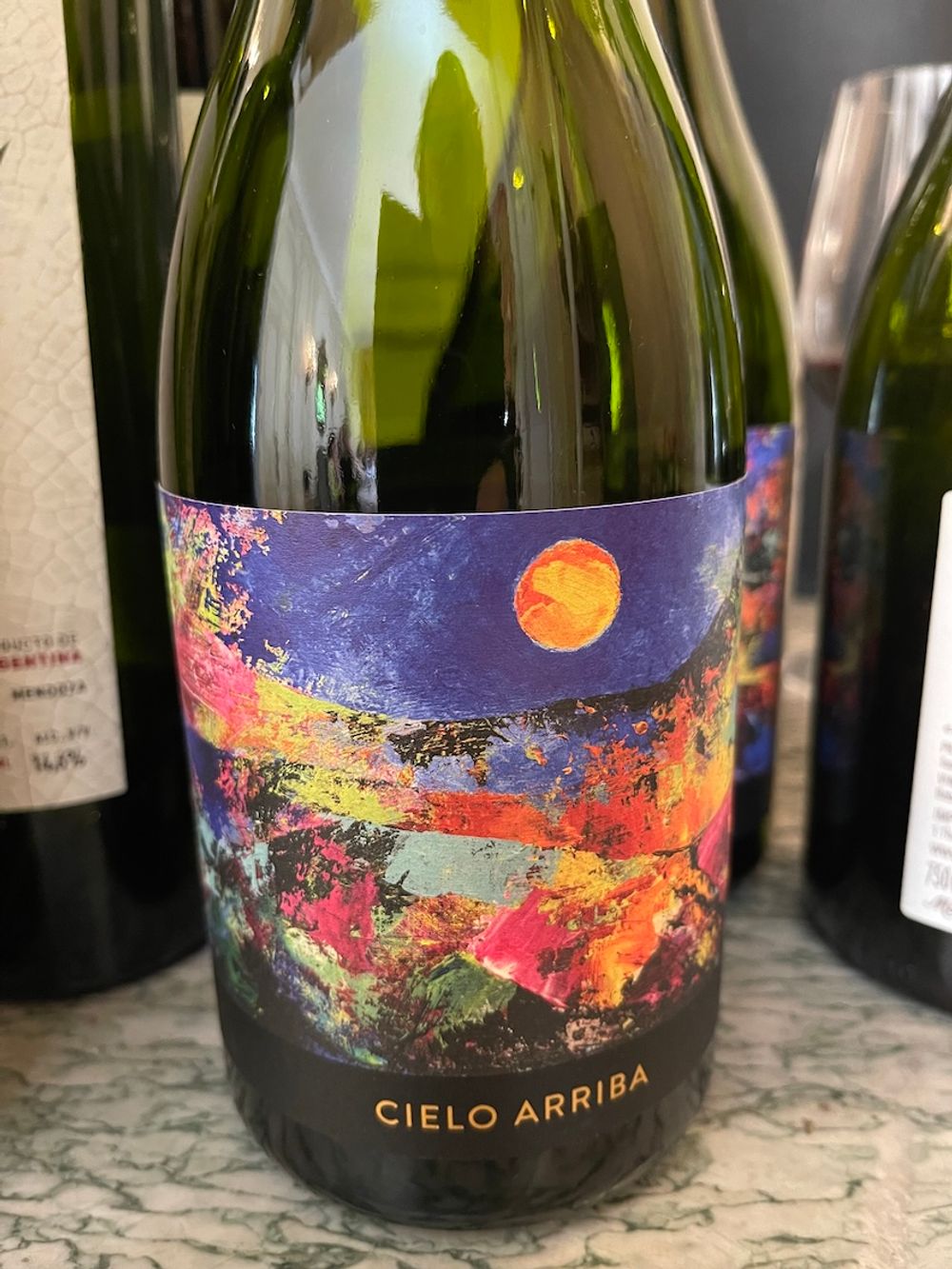
Cielo Arriba, Huichaira Vineyard, Jujuy 2020 14% £41.50
This wine is about pushing boundaries, it is grown at 2710 metres in the north of Argentina in Jujuy very close to the highest vineyard in the world. The place is tropical but cool because of its altitude. Incredibly it’s Winkler 1 and very close to the Tropic of Capricorn, apparently people go there thinking it is warm and end up buying a poncho in the plaza. The valleys are narrow and sloping so it is impossible to plant more than a few hectares, hence why the terroir varies wildly within a short distance – 200m difference in altitude translates as a month’s earlier/ later picking time.
Atkin says these northern, high-altitude sites are extremely exciting. Northern wines have a wild herb character. There is an intensity in the sunlight ideal for photosynthesis and there is no loss of energy at night because temperatures are so low. Veraison to maturity is faster than elsewhere at 35-40 days. Sugar, acidity and aromatics mature in unison.
The Malbecs from this place are very different, this has a little bit of Syrah (3%) and Cabernet Franc (7%). Stems add sweetness and terroir expression, the wine is 60% whole cluster. Vines are ungrafted, nematodes not phylloxera are an issue here. Aged in new oak barrels.
The wine is divinely herbal, it’s like a druid’s man bag; sage and thyme, even rosemary. Fresh and peppery with deep plum, dark chocolate, graphite and wet woodsmoke. Tangy, sweet, tart, salty and round, it has an alluring intensity and I would like a lot more of it.
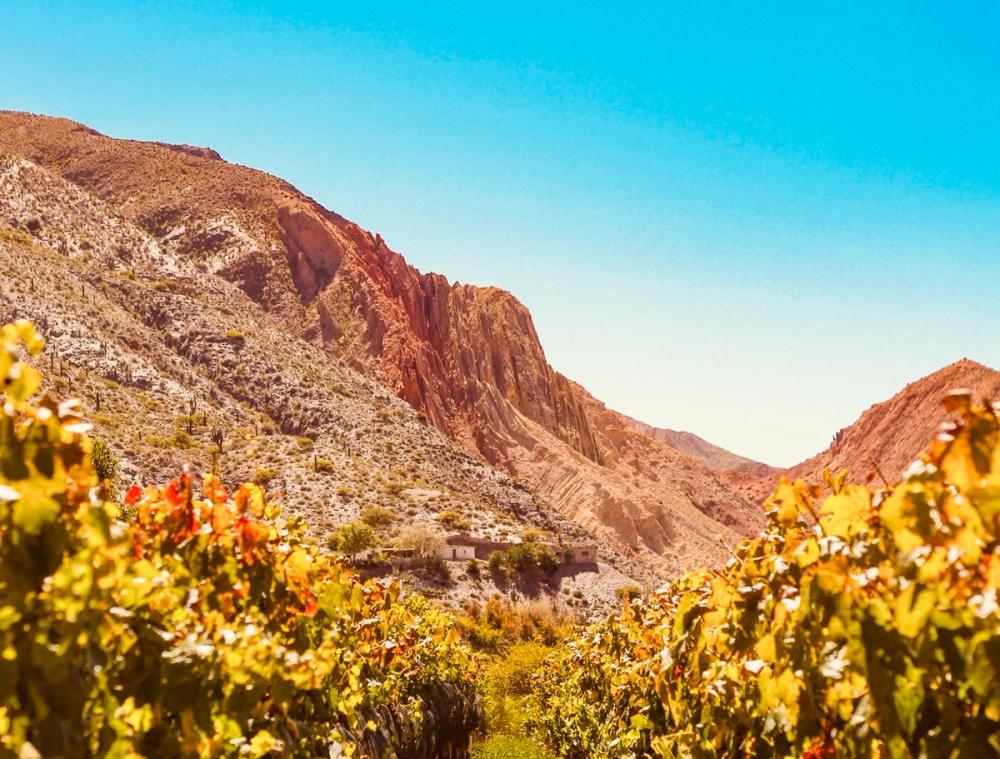
Pushing the envelope: Cielo Arriba's Huichaira Vineyard sits at 2710m above sea level
The rest of the portfolio…
I cannot sign off without entreating readers to try some of the other new wines in the Corney & Barrow Argentine portfolio.
I was amazed by the beauty of Michelini I Mufatto Oleo Gualtallary Malbec 2021, beguiling hardly covers it, I think it is one of the best Malbecs I have ever tasted. And the whites were equally fabulous, structured and textural, the Propósitos Chenin Blanc 2021 is only 10% alcohol and insanely textured and complex, salty, with yellow apple and a candied, citrusy, mineralic zing – these two must be tried to be believed. As must Estancia Los Cardones Flor de Cardon Malbec 2022 by Mil Suelos or Milsuelos, the jury is out – this wine from Salta is magnificent – fragrant with garrigue and mint and fine crunchy black fruit. It needs a dribble emoji. Actually, all of the wines made by Alejandro Sejanovich are insane.
Corney & Barrow is a commercial partner of The Buyer, to discover more about them click here.
